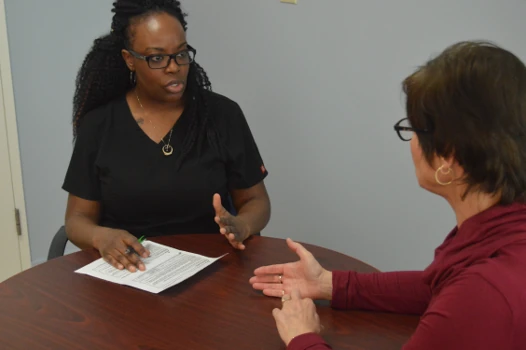A Client's Role in Enhancing Holistic Treatment
Wednesday, August 29, 2018, 12:30 PM
Massage therapists, reflexologists, and other holistic health practitioners undergo extensive training to ensure they are able to provide the best possible treatment for their clients.
This involves understanding anatomy and treatment options, keeping detailed notes, responding to verbal and non-verbal cues, and knowing when to refer a client to another health professional.
However, delivering effective treatment is not solely the responsibility of the practitioner. As a client, there are important things to consider both before and after your appointment that will enhance the positive outcomes of the treatment.
Be Honest
The most important thing you can do when receiving a treatment is be honest with your therapist. This starts before you even begin the actual treatment. In order for your therapist to provide the best treatment, they need to know your health history, current medications and health concerns, and your goal for recovery.

This can be difficult for people that suffer from anxiety or depression, or for those who feel uncomfortable sharing private information with someone they don't know.
However, if you allow your practitioner to really get to know you, they can provide you with the best care for your needs. You may also build a long-term, trusting relationship that will benefit your well-being down the road.
Be Clear
Your holistic treatment revolves around you. Provided you are respecting client-practitioner boundaries, you should feel comfortable telling your therapist if something is not working for you.
Lighting, temperature, and music are all things that can be easily changed. If an adjustment to any of these would make you more comfortable be sure to let your practitioner know.
Your physical treatment should also be tailored to you. If you are in pain, need more draping, or prefer a different level of pressure, tell your therapist immediately.
If for any reason you wish to stop treatment, say so. You should never feel awkward about expressing your needs during treatment; open communication is the key to building trust.
Follow Post-treatment Instructions
Often your practitioner will assign self-care activities for you to do at home. This is especially true in massage therapy. Activities will usually be exercises or stretches designed to enhance treatment, promote flexibility and range of motion, or help an injury.

For your holistic treatment to be as effective as possible, it is important to follow your therapist's instructions at home. Although some people just want a relaxing treatment, chances are high that you are receiving treatment for something specific.
To experience the best treatment outcome and reduce the risk of re-injury, you should follow the post-treatment instructions your therapist suggests.
Drink Water
Your therapist will probably tell you to drink extra water after your treatment, especially if it is a massage-based practice. There a few reasons for this.
First, massage increases the circulation of both the blood and the lymphatic system. Water aids in healthy circulation and supports the delivery of oxygen and nutrients to the muscles and organs.
That increased circulation and the muscle kneading in massage therapy promotes the pumping of fluid out of the soft tissue and into the circulatory system, where it heads toward the kidneys and is flushed out of the body.
Finally, massage therapy works out tension in the muscles, causing a release of metabolic waste, which also moves toward the kidneys. Drinking water supports the elimination of that waste from the body as well as the optimal functioning of the body's systems.
Your practitioner is there to help you feel better, but they can't be the only party focused on the treatment. When a client and practitioner work together toward a common goal, they can implement an effective treatment plan.
Open communication and dedication to your well-being — from both you and your therapist — will ensure the best outcomes possible.

